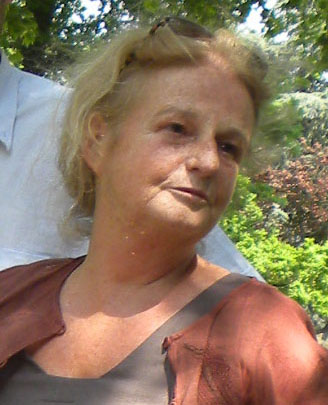Geneviève BARNAUD – French National Museum of Natural History (Department of Ecology and Biodiversity Management)
Geneviève Barnaud is on the Scientific Council of the Liteau programme, which is a programme of the French Ministry of Ecology and Sustainable Development (MEEDDM). Her research attempts to define conservation strategies for wetlands.
1 – What is your current role in the LITEAU programme?
 At the beginning, I coordinated the research carried out by the French National Wetlands Research Programme (PNRZH) and the Liteau programme. Subsequently, the orientation of the Liteau research towards putting ecology into practice and the increased attention focused on the coastal strip, including the marshes, justified my greater involvement in this programme. Today, the priority given to questions relating to the evaluation of services rendered by ecosystems, the development of ecological engineering and/or wetlands restoration, and the creation of compensatory measures, explains my involvement in the Scientific Councils of these programmes, all the more as wetlands are often used in them for field studies.
At the beginning, I coordinated the research carried out by the French National Wetlands Research Programme (PNRZH) and the Liteau programme. Subsequently, the orientation of the Liteau research towards putting ecology into practice and the increased attention focused on the coastal strip, including the marshes, justified my greater involvement in this programme. Today, the priority given to questions relating to the evaluation of services rendered by ecosystems, the development of ecological engineering and/or wetlands restoration, and the creation of compensatory measures, explains my involvement in the Scientific Councils of these programmes, all the more as wetlands are often used in them for field studies.
2 – What are the specificities of the “Camargue” project in this LITEAU programme?
If the “Camargue” project means a territory along with its history, and current and future development issues, which regularly benefits from scientific studies, then the number and the continuity of the various forms of support given by the Liteau programme reflects this singularity. A site that has received so much attention offers several advantages:
- the Camargue seems to be a study area that is pertinent for any research programme having to do with “water” issues: whether from a biological, ecological, hydrological, or social point of view
- there is also a significant body of literature on it including several long-term monitoring studies
However, there are also some risks, such as becoming isolated and transferring only findings of a limited value to others. The participation of the Camargue teams in many scientific and technical networks, at the Mediterranean and international levels, allows them to overcome these obstacles.
3 – What do you know about how decision makers and site managers in the Camargue have adopted and put into practice these findings and tools?
The road is still long, for several reasons that are not specific to the context in the Camargue. The current programmes require scientific excellence and a close relationship between researchers and those who will use their findings.
However, the goodwill to work together wanes quickly, as the research and activities calendars do not correspond with each other. In addition, going from scientific productions to the design of a truly operational system requires testing and the time needed to make adaptations is not always foreseen. Fortunately, as is the case in many protected sites, the site managers have a scientific background and are able to detect the applications and problems.
More generally speaking, the basic operating principle is as follows: the scientist publishes papers, and proposes protocols, devices and models, then the stakeholders in the field and decision makers, who are influenced by the immediate context, choose whether or not to use them. I think that many technical solutions to current management problems can be found on the shelves or on old hard drives. The fundamental problem is that is it more exciting to rediscover the world than to re-open files and re-examine them in terms of today’s interrogations.
4 – In your opinion, what are the priority issues in the Rhone delta today?
I believe that today and in the upcoming decades, the multiple effects of climate change – hydrological, chemical, biological, ecological, economic, and sociological – appear to be the fundamental issues on which research must place the priority.
5 – What role can researchers play, in general, and those at the Tour du Valat, in particular, in such a context?
I often imagine that old notebooks can still be found in the bottom of desk drawers at the Tour du Valat. It is rare to have data — and not only on birds – that goes back almost 60 years. These long-term monitoring data are really an advantage for your centre. The participation of the Camargue teams in many scientific and technical networks must be intensified and strengthened, for instance, by joining the international network of sites focussing on Long Term Ecological Research.
In addition, the wheel of fate has turned in environmental research programmes: after the initial priority given to physical then ecological approaches, today’s emphasis is on the human sciences. It would be a good idea for research teams, such as the one at the Tour du Valat, to maintain a high level of ecological research, because the demand from the field in terms of advice and technical concerns remains very high.